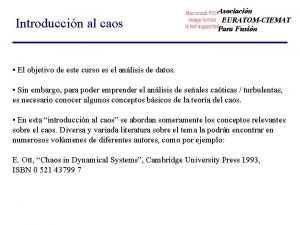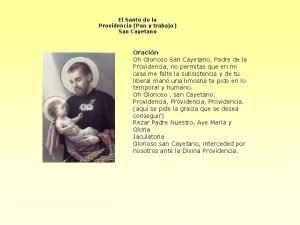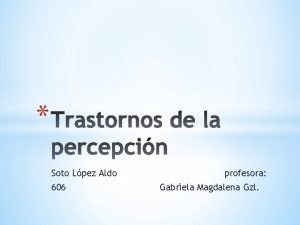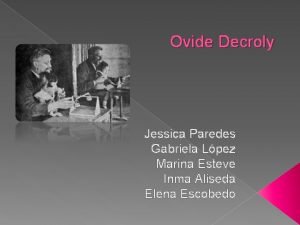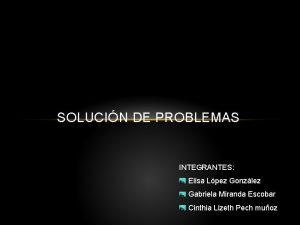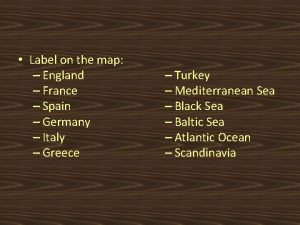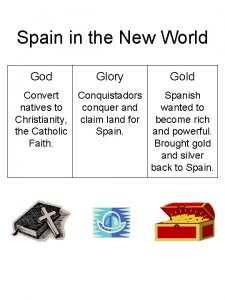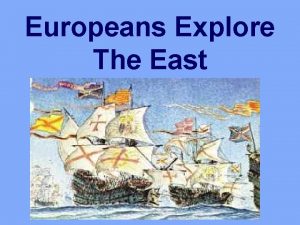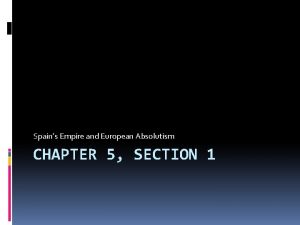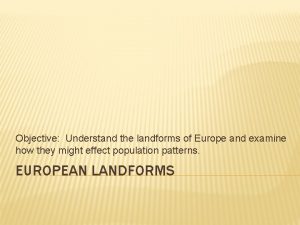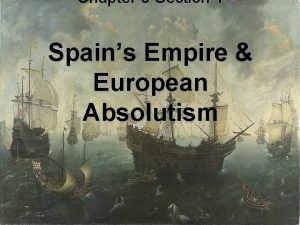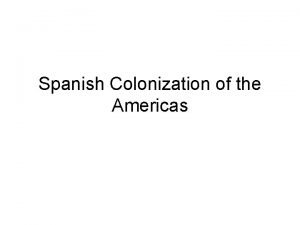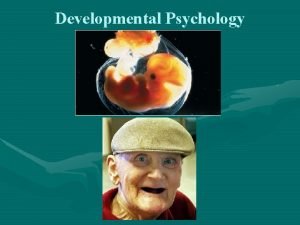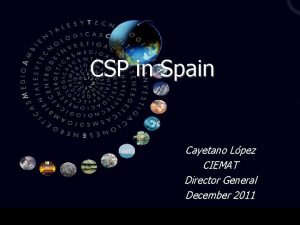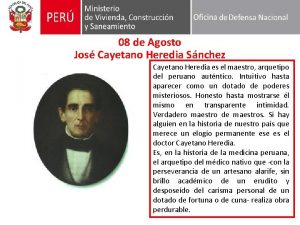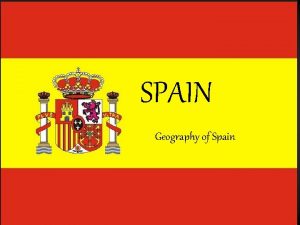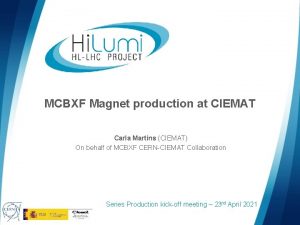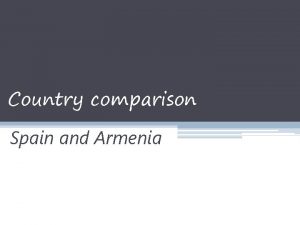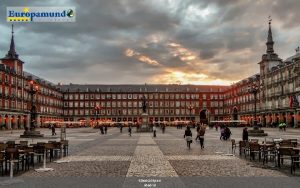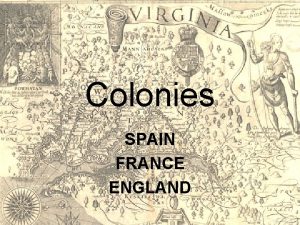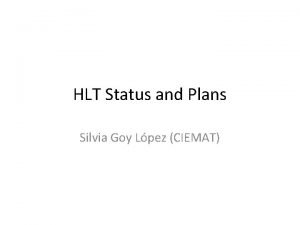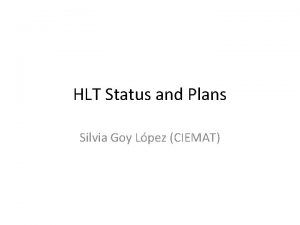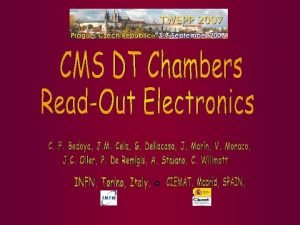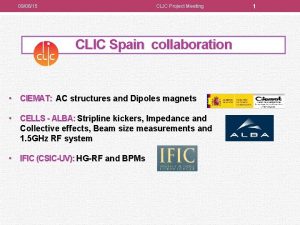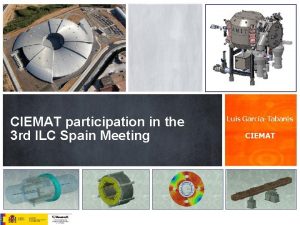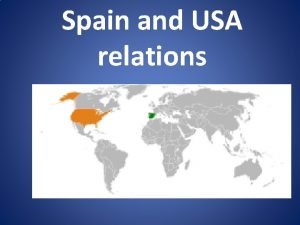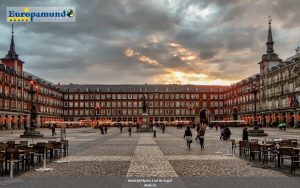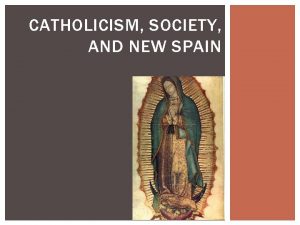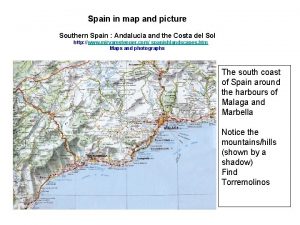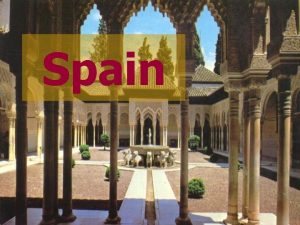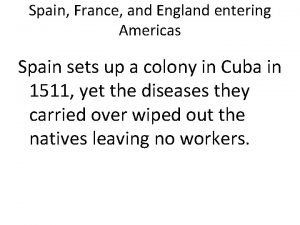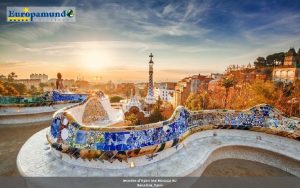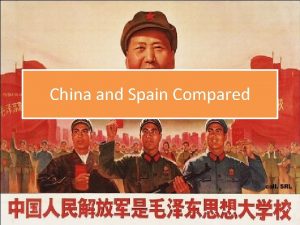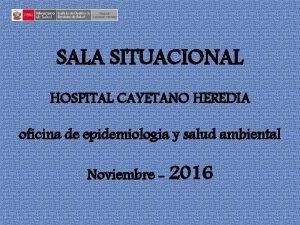CIEMAT and Energy Research in Spain Cayetano Lpez






























- Slides: 30

CIEMAT and Energy Research in Spain Cayetano López Director General June 25, 2014

CIEMAT: Basic data Centro de Investigaciones Energéticas, Medioambientales y Tecnológicas Personnel (2013): 1. 330 (including Ph. D. students) Operational Budget (2013): 106 M€ External Income (2013): 44 M€ (42%) OPI: Ministerio de Economía y Competitividad

CIEMAT Objectives Ø Promote and execute R&D activities, in accordance with ministerial guidelines, in the fields of energy, environment and technology, including specific fields of basic research. Ø Be a center of reference in the areas of its expertise, cooperating with the Autonomous Communities. Ø Collaborate with other national R&D centers, universities and enterprise. Ø Carry out its activities in the framework of the EU and cooperate with intergovernmental bodies and R&D centers from other countries. Ø Promote the activities derived from its R&D in terms of scientific-technical communication and dissemination, education and technology transfer. Ø Provide first-rate technical services in the areas of its expertise. Ø Advise the public administrations and public and private institutions, and represent Spain in the appropriate international forums.

Budget evolution External income 2013 (M€)

Organization Chart

Scientific and technical areas Ø Renewable energy and energy savings Ø Nuclear fission Ø Nuclear fusion Ø Fossil fuels (energy recovery) Ø Elementary particles and astroparticles Ø Biology and biomedicine Ø Environment Ø Ionizing radiations Ø Scientific instrumentation medical physics Ø Materials analysis and characterisation Ø Computation and information technology sciences Ø Energy and environmental system studies

Department of Energy DEPARTMENT OF ENERGY Life Cycle Analysis PLATAFORMA SOLAR DE ALMERÏA CEDER (SORIA) RENEWABLE ENERGY NUCLEAR FISSION COMBUSTION & GASIFICATION

Solar Platform in Almeria (PSA) 10 11 9 1. - Central Receiver 2. - Parabolic troughs 3. - Direct Steam Generation 4. - Stirling Dishes 3 1 8 5 5. - Solar Furnace 4 6 6. - Water Detoxification 7. - Water Desalination 8. - Energetic Efficiency in Buildings 8 9. - Fresnel Collectors 10. - Advanced Technologies and Storage: gas / molten salts 7 2 The Plataforma Solar de Almería is the world most complete experimental installation in concentration solar energy

Central Receiver: Gemasolar Molten salts receiver installed in Gemasolar , tested and designed in CESA-1 (PSA) Power: 20 MWe. Storage: 15 h at full power In summer, the plant is in operation 24 h/day

A technological breakthrough: Direct Steam Generation Environment friendly Cost reduction (˞ 20 %) Máx. temperature and pressure: 400 ºC and 120 bar. 11 troughs. Opening: 5. 76 m; total length: 550 m; Power: 1. 8 MWt 3 MWe demonstration plant in order to check this technology (CIEMAT, Iberdrola, IDAE, AGECAM, Navarro-Piquer) Canceled in 2012

Environmental Applications - Detoxification plant for pesticide polluted waters in the Almeria greenhouse fields. In operation since June 2004 (ALBAIDA) - CONSOLIDER Project: TRAGUA (Solar Energy for water treatment) - AQUACAT: Egypt, Tunisia, Morocco - VII FP projects: SOLWATERGY (Integration of CSP and Desalination at the Mediterranean Area), Spain, France, Germany, Switzerland, Egypt, Algeria

PSA-SFERA International Programme Solar Facilities for the European Research Area (SFERA) § An Integrating Activity under FP 7 CAPACITIES programme. § CIEMAT coordinates this project through the Plataforma Solar de Almería (PSA) § Objective: To integrate, coordinate and promote scientific collaboration among European institutions working in solar concentrating technologies: • Transnational access to researchers, helping to strengthen the European Research Space. • Cooperation networks including organisation of training courses for young researchers. • Joint research activities design to improve the quality and service of existing infrastructures. § Partners: CIEMAT (Spain), DLR (Germany), ENEA (Italy), PSI (Switzerland), CNRS (France) and WIS (Israel).

EU-SOLARIS in ESFRI The European Research Infrastructure for Concentrated Solar Power (EU SOLARIS) § Initiative accepted as the European Strategic Forum of Research Infrastructures (ESFRI) Project in 2010, as one of the priority European research lines. § It is a project directed at the creation of a large European solar concentrating or solar thermal energy R&D facility. § The infrastructure would be based on the already existing facilities in the Plataforma Solar de Almería (PSA) of CIEMAT and the new facilities planned by the Advanced Technology Centre for Renewable Energy Foundation (CTAER). § This project is composed by 15 partners which represent 9 countries : • 13 Research Centres • Ministry of Economy and Competitiveness (MINECO) • European Solar Thermal Electricity Industry Association (ESTELA)

CEDER, 640 Ha in Soria (250 km North-East of Madrid) CEDER (Centro de Desarrollo de Energías Renovables) Biomass Energy Crops Biomass characterization Solid biofuels Combustion analysis Thermal conversion Smart Grids Small Wind Co-combustion of biomass and waste Integration of renewable sources and storage Turbine test plant Biomass gasification Electric vehicle, micronetworks, ICT, etc Flywheels Kinetic studies Simulation in a real context Component test laboratory

Wind Energy Unit Ressource Assessment and Forecasting • • High Resolution Mesoescalar Modelling (WRF/MM 5) Advanced Statistic Downscaling Advanced Quality Control (on- and off-line) Short-term wind forecasting (NWP) Hybrid Systems and Minigrids - Computational simulation (HOMER) and Experimental Systems Sizing (CEDER) - Test (CICLOPS 1 & 2) and development (CICLOPS 2) - Supervisory and control systems (SEDUCTOR) - Wind/Diesel systems (Fuerteventura, SEDUCTOR. . . ) - Minigrids and distributed generation (SINTER, GEBE. . . ) - Sea water desalination systems based in wind (WINDOSMOSIS) CIEMAT-CEDER Hybrid systems and mini-grids Test site. Soria (SPAIN)

Wind Energy Unit: Small Wind Test Site SWT modelling: Computational and experimental (CEDER) SWT test: Power performance Duration test and operation and safety Acoustic noise emissions Component test: Static and dynamic test of blades Generators, power converters, towers ENAC Accredited Lab INTERTEK Associated lab for IEC 61400 -2, IEC 61400 -11 tests Leader of the Small Wind Association of Testers (SWAT) CIEMAT-CEDER SWT Site Soria (SPAIN)

Liquid Biofuels Unit OBJECTIVE To develop processes and technologies for converting lignocellulosic materials into ethanol in an efficient and cost-effective manner to facilitate the adoption of these processes by industry CAPABILITIES Biomass characterization: Pilot plant at L’Alcudia (Valencia) Diluted acid hidrolisis, 70 Tons/day Urban Solid and Agrricultural Waste Chemical composition of raw biomass feedstocks and the solid, liquid, and slurry samples produced during conversion. Real time analysis. Biochemical conversion: Pretreatment: Hydrothermal and Physico-chemical Enzymatic hydrolysis Fermentation: Separate, Simultaneous Joint Unit with IMDEA-Energy for the study of micro-algae for biofuel production

Photovoltaics Main objective: Increase competitiveness and reliability by reducing costs, improve efficiency & reliability of components & systems Main activities: New PV crystalline materials (Cu. In. Se 2, Cd. Te) (thin-films) PV devices based on deposited Si (thin-films) PV solar cells, modules and arrays Grid connected building integrated PV systems Engineering and evaluation of large PV power plants Stand-alone PV systems Micro-pilot plant of magnetron sputtering for 30 x 30 cm 2 samples Hybrid wind-PV-Diesel system for electric vehicles Two chambers PECVD reactor

Energy Efficiency in Buildings Objectives Improve the conventional design of buildings & cities. Maximum in energy efficiency and renewable energy production Minimum in energy demand Through the use of: Bioclimatic strategies. Renewable energies integration. Distributed poligeneration. Modelling, simulation and energetic analysis: Smart Cities. Large areas analysis: urban scale. Monitoring: Energy and thermal consumptions. Sensitivity analysis. Experimental, data under real conditions.

Fuel cells and Hydrogen Low and High Temperature Fuel Cells New materials and fabrication methods Components Physico-Chemical characterization Catalytic activity Interface Anode/electrolyte Evaluation System Integration Hydrogen production from renewable sources Stationary and mobile applications Integration in electrical vehicles Control strategies

CIEMAT and the Spanish nuclear sector ENRESA (80% CIEMAT) ENUSA (40% CIEMAT) Nuclear Fuel Manufacturing Radioactive Waste Management Research, Development, Innovation, Technical Services CONSEJO DE SEGURIDAD NUCLEAR (National Regulatory Commission) NUCLEAR POWER PLANTS, INDUSTRIES, HOSPITALS, etc.

Nuclear Fission /1 Radioactive waste L & I level radioactive waste High level radioactive waste Contract with ENRESA In connexion with the Repository El Cabril And the HL Waste Repository ATC to be built over the next 5 years Nuclear Reactor Structural Materials LWR vessel & internals Molten Lead cooling

Nuclear Fission /2 Nuclear safety Severe accidents Laboratory of Safety Systems Analysis (LASS) High burn-up fuel (Halden and JHR Reactors) PECA facility at LASS Advanced nuclear fuel cycles Systems for HLW transmutation, ADS (Myrrha) Nuclear data for advanced NR (n-To. F) Generation IV Fast Reactors Sección eficaz de captura Nuclear Innovation

Fusion National Laboratory at CIEMAT

Participation in Fusion International Programmes Coordinator of the Spanish participation in the European Fusion Programme TJ-II stellarator New concepts Participation ITER JET 1983 DEMO JT-60 Technology B. Approach IFMIF Technofusion

Participation in the ITER Project • • Fusion for Energy (Barcelona) 6000 M€ of investment for ITER over 10 years R+D tasks coordinated by CIEMAT in Spain Fusion Technologies • Auxiliary Broader Approach Systems of the Neutral Beam Injector • Tritium Regeneration • Analysis of the Tritium permeation • Cooling Systems in access ports • Remote Handling • Data Adquisition and Control IFMIF and JT-60 Materials for Fusion Consolider (100 researchers and 12 centers in Spain) JT-60 Cryostat

Alliance for Energy Research and Innovation is a great public-private national agreement that was born in June 2011 with the challenge of reinforcing international Spanish leadership in the field of energy innovation Main objective: to improve the efficiency and efficacy of our energy research and innovation system with the aim of contributing towards the consolidation of the existent strengths, as well as promoting the internationalization of our capacities and abilities. For that purpose it is important to work on particular goals such as: strategy, coordination and internationalization. 11 representatives from Private Sector 11 representatives from Public Sector Governance Technical Secretary Members of the Alliance Strategy Committee is conducting an exercise to analyze the potentiality of the energy technologies development, in Spain, based on 7 criteria, having been identified suitable and measurable indicators related to these criteria. 14 technological sectors has been identified. First conclusions will be ready in September 2014.

International Presence Knowledge and Innovation Community (KIC-Inno. Energy) • CIEMAT actively participates in the Sustainable Energy KIC • Alliance formed by the best-players companies, • universities, business schools, and centres of technology and innovation that cover the whole energy matrix. Six regional European co-location centres comprise the consortium: Ø Ø Ø Benelux (Intelligent, Energy-efficient Buildings and Cities) Iberia (“Renewables”) Alpes Valles (“Sustainable Nuclear & Renewable Energy convergent”) Sweden (“European Smart Electric gris & Electric Storage”) Polonia Plus (“Clean Coal Technologies”) Germany (“Energy from Chemical Fuels”)

International Presence European Energy Research Alliance (EERA) Coord. the first approved Integrated Research Project : Stage-STE (on CSP) Joint Programmes (JP): • Photovoltaic, Wind, Geothermal and Smart Grids (launched Jun 2010) • Carbon Capture and Storage, Materials for Nuclear and Bio Energy (launched Nov 2010) • Concentrating Solar Power and Ocean Energy (launched Nov 2011) • Smart Cities, Advanced Materials and Processes for Energy Applications, Energy Storage, and Fuel Cells and Hydrogen (submitted Nov 2011) • Economical, Environment and Social Impacts, and Shale Gas (launched April 2013)

Thank you !!!
 Ciemat
Ciemat Manuelita rosas
Manuelita rosas Plexus
Plexus Gabriela lpez
Gabriela lpez Gabriela lpez
Gabriela lpez Gabriela lpez
Gabriela lpez Energy energy transfer and general energy analysis
Energy energy transfer and general energy analysis Energy energy transfer and general energy analysis
Energy energy transfer and general energy analysis France spain map
France spain map God gold and glory spain
God gold and glory spain Yucatan peninsula on south america map
Yucatan peninsula on south america map Spain and portugal
Spain and portugal Chapter 5 section 1 spain's empire and european absolutism
Chapter 5 section 1 spain's empire and european absolutism European landforms
European landforms Chapter 5 section 1 spain's empire and european absolutism
Chapter 5 section 1 spain's empire and european absolutism Why did england and spain go to war
Why did england and spain go to war God, gold and glory spain
God, gold and glory spain Christmas in latin america and spain
Christmas in latin america and spain Chapter 21 absolute monarchs in europe
Chapter 21 absolute monarchs in europe Latin america and spain map
Latin america and spain map What products came from the farms of italy gaul and spain
What products came from the farms of italy gaul and spain What is basic research
What is basic research Contrast applied research and basic research
Contrast applied research and basic research Longitudinal research and cross sectional research
Longitudinal research and cross sectional research Example of applied research
Example of applied research Types of conclusive research design
Types of conclusive research design Nature of inquiry and research
Nature of inquiry and research Defining the research problem
Defining the research problem Section 2 describing energy (continued)
Section 2 describing energy (continued) Primary energy and secondary energy
Primary energy and secondary energy Hypdro
Hypdro
